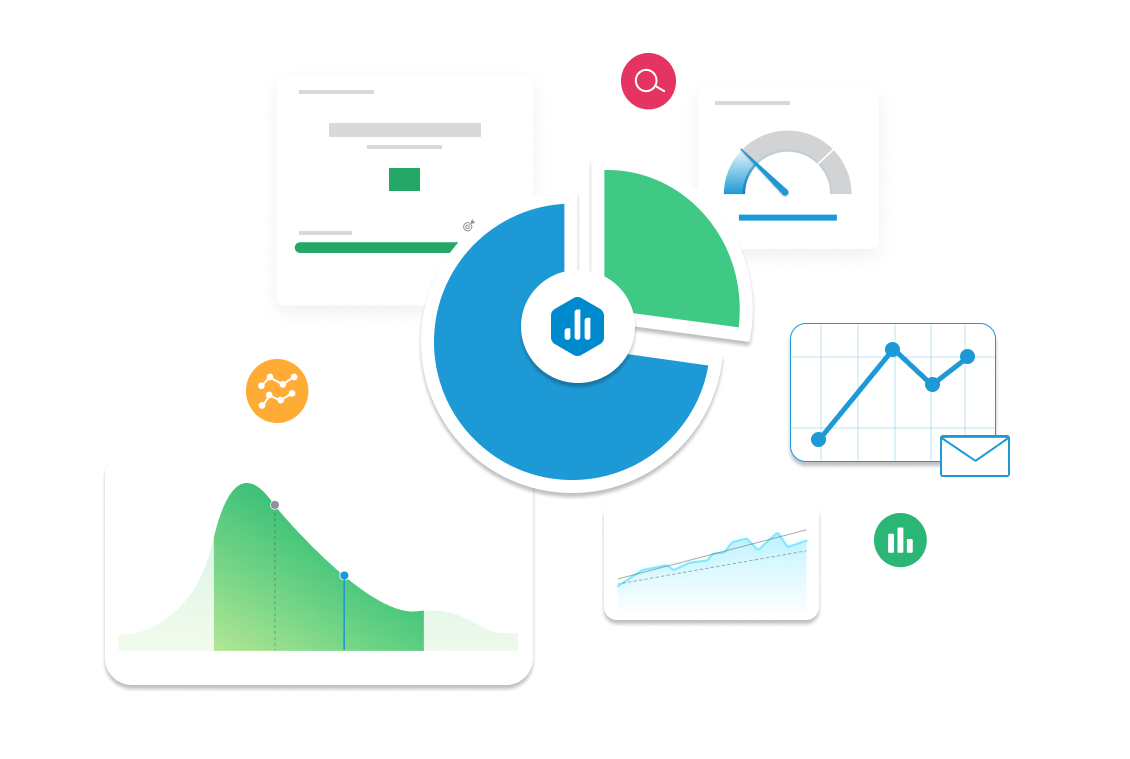Lifetime Value of a Customer (LTV)
Discover how Lifetime Value of a Customer (LTV) measures the total revenue a business can expect from a customer over their entire relationship. Learn how to track, analyze, and optimize LTV to improve profitability and customer retention.

| Category |
Marketing |
|---|---|
| Type |
Lagging Indicator |
| Calculation |
LTV = Average Revenue Per Customer × Customer Lifetime Where:
|
| Measure |
Tracks the projected revenue a customer will generate throughout their relationship with a business, helping companies assess retention and growth strategies. |
| Data Sources: |
Salesforce, HubSpot, ProfitWell, Stripe, Chargebee, Recurly, Google Analytics. |
| Frequency |
Tracked quarterly or annually to evaluate long-term revenue trends and customer retention impact. |
Example target
Increase LTV by 20% in Q3 by improving retention strategies, upselling premium services, and enhancing customer support.
Example Reports Use Case
A Growth Strategist tracks LTV to determine the profitability of customer segments. If LTV is low, they may improve onboarding, implement loyalty programs, or increase cross-sell opportunities.
What is Lifetime Value of a Customer (LTV)
Lifetime Value (LTV), also known as Customer Lifetime Value (CLV), is a metric that estimates how much revenue a business can expect from a single customer over the entire time they stay a customer. It helps you understand the long-term value of your customer relationships—not just one-time sales.
LTV is important because it shows whether your customer acquisition and retention strategies are profitable. If your average LTV is higher than what you spend to acquire and serve a customer, your business is in a strong position to grow.
The basic formula is:
LTV = Average Purchase Value × Purchase Frequency × Customer Lifespan
For example, if a customer spends $100 per order, buys 4 times a year, and stays for 3 years, their LTV is $1,200. This metric gives marketers, product teams, and executives a clearer picture of customer worth, helping guide decisions on acquisition, retention, and customer experience strategies.
How to Calculate Lifetime Value of a Customer (LTV)
There are different ways to calculate Lifetime Value depending on what you want to learn. The goal is always to understand how much money a customer brings in over time.
1. Basic LTV
This is the most common version:
LTV = Average Purchase Value × Purchase Frequency × Customer Lifespan
Example: $50 per order × 5 orders/year × 3 years = $750 LTV
2. LTV per User (for subscriptions or SaaS)
For subscription businesses, LTV is often based on revenue per user and churn rate:
LTV = Average Monthly Revenue per User ÷ Monthly Churn Rate
Example: $20 per month ÷ 0.05 (5% churn) = $400 LTV
3. LTV by Channel
This helps compare the value of customers from different marketing sources.
Example: Customers from email marketing might have a $1,200 LTV, while paid ads bring $800.
Why Lifetime Value of a Customer (LTV) Matters
Lifetime Value (LTV) is one of the most important metrics for understanding the long-term value of your customer relationships. It tells you how much revenue a single customer is likely to generate over time. Knowing this helps businesses make smarter decisions about how much to spend on acquiring and keeping customers.
LTV connects directly to growth, profitability, and efficiency. For example, if your average LTV is $1,000 and it costs $200 to acquire a customer, that’s a solid return. But if acquisition costs rise or LTV drops, it can hurt your bottom line.
Marketers use LTV to guide budget decisions, sales teams use it to prioritize high-value customers, and executives use it to shape long-term strategy. It also helps identify which customer segments are the most profitable, revealing where to focus retention and upsell efforts. Monitoring LTV regularly supports smarter, more sustainable business growth.
Related KPIs to Lifetime Value of a Customer (LTV)
LTV is deeply connected to other key metrics that influence revenue, marketing efficiency, and customer success. Here are the most common ones:
LTV vs. Customer Acquisition Cost (CAC)
LTV tells you how much a customer is worth; CAC tells you how much it costs to get them. The LTV:CAC ratio is critical—ideally, LTV should be at least 3x CAC. If LTV is $600 and CAC is $200, you’re in a healthy range. If they’re equal, you may not be profitable.
LTV vs. Churn Rate
A high churn rate lowers LTV because customers leave sooner. Reducing churn (especially in SaaS or subscription models) directly boosts customer lifespan—and LTV.
LTV vs. Average Order Value (AOV)
LTV increases as customers spend more per purchase. Improving AOV through upsells or bundles can raise LTV without changing how often customers buy.



